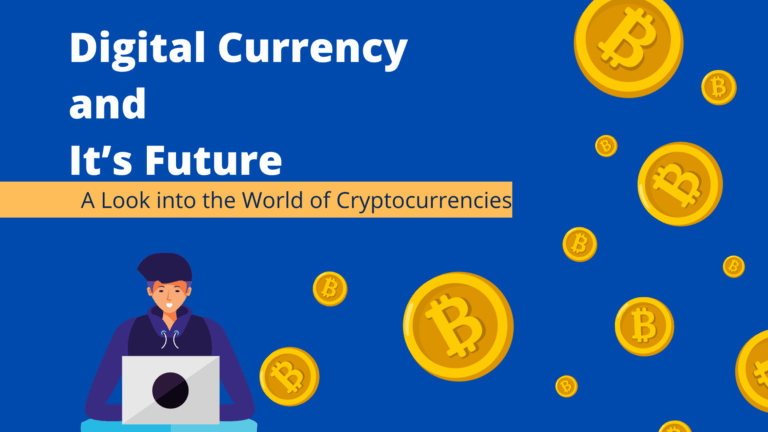Introduction:
In the last few years, the world has witnessed the emergence of digital currency, which is considered a groundbreaking concept that has the potential to revolutionize the global financial system as we know it. The introduction of blockchain technology, a decentralized ledger system that ensures transaction security and transparency, has made this transformation possible. Cryptocurrencies such as Bitcoin, Ethereum, and Ripple have garnered immense attention and popularity due to their ability to operate independently from traditional banking systems and provide users with increased control over their finances.
These digital assets offer unique advantages, including faster transaction speeds, lower fees, and greater accessibility for individuals across the globe. As a result, they have sparked new discussions around monetary policies, financial regulations, and even potential applications beyond traditional finance sectors. The rise of digital currencies signifies a significant shift in how we perceive money and conduct financial transactions on a global scale. In this blog post, we will delve into the world of digital currency, exploring its origins, current state, and, most importantly, its future prospects.
Origins of Digital Currency:
The concept of digital currency can be traced back to the late 20th century, when computer scientists began exploring alternatives to traditional fiat currencies. However, it was not until 2009 that Bitcoin came into existence with the publication of Satoshi Nakamoto‘s whitepaper titled “Bitcoin: A Peer-to-Peer Electronic Cash System.” This marked a significant milestone in the development of digital currencies and laid the foundation for what was to come.
Digital currencies have gained traction primarily due to their decentralized nature and the use of blockchain technology. An anonymous person or group of people using the alias Satoshi Nakamoto created Bitcoin, the first and most well-known digital currency, in 2009. Since then, numerous other cryptocurrencies, such as Ethereum, Ripple, and Litecoin, have emerged, each with their own unique features and use cases. The future of digital currencies holds immense potential for disrupting traditional financial systems, enabling faster and cheaper transactions, and providing financial access to the unbanked population.

Current State of Digital Currency:
Fast forward to today, and we find ourselves in an era where digital currencies have gained widespread adoption and recognition. Bitcoin remains at the forefront as the most well-known cryptocurrency, with a market capitalization of billions. Additionally, numerous altcoins (alternative cryptocurrencies) have emerged, offering unique features and functionalities.
One key aspect that has contributed to the growth of digital currency is decentralization. Unlike traditional banking systems, where central authorities govern transactions, cryptocurrencies operate on decentralized networks known as blockchains. This ensures transparency, security and eliminates intermediaries from financial transactions.
Furthermore, digital currencies offer several advantages over traditional fiat currencies. They enable faster cross-border transactions with reduced fees compared to conventional banking systems. Additionally, they provide individuals with greater control over their finances by eliminating third-party involvement.
Future Prospects:
As we look ahead to the future of digital currency, it is important to consider both the opportunities and challenges that lie ahead.
1. Mainstream Adoption:
One crucial factor for digital currencies’ future success is their mainstream adoption. While cryptocurrencies have gained popularity among tech-savvy individuals and investors, widespread acceptance by governments, financial institutions, and businesses is still a hurdle to overcome. However, with increasing regulatory frameworks and growing interest from institutional investors, the path towards mainstream adoption seems promising.
2. Central Bank Digital Currencies (CBDCs):
Another significant development in the digital currency space is the emergence of Central Bank Digital Currencies (CBDCs). CBDCs are digital representations of fiat currencies issued by central banks. Several countries, including China and Sweden, have already begun exploring the implementation of CBDCs. These initiatives aim to enhance financial inclusion, reduce costs associated with cash management, and provide more efficient monetary policy tools.
3. Technological Advancements:
The evolution of blockchain technology will play a crucial role in shaping the future of digital currency. As scalability issues are addressed and new consensus mechanisms are developed, cryptocurrencies will become more efficient and capable of handling large-scale transactions. Additionally, advancements in privacy-enhancing technologies will address concerns regarding anonymity while complying with regulatory requirements.
4. Integration with Traditional Financial Systems:
To achieve widespread adoption and bridge the gap between traditional financial systems and digital currencies, interoperability is key. Efforts are underway to enable seamless integration between cryptocurrencies and existing payment infrastructures such as credit cards or mobile wallets. This will allow individuals to use digital currencies for everyday transactions without significant disruptions or changes to their existing financial habits.
Conclusion:
Digital currency has come a long way since its inception over a decade ago. Its disruptive potential has captured the attention of individuals across various industries worldwide. While challenges remain on the path towards mainstream adoption, it is clear that digital currencies are here to stay.
As technological advancements continue to unfold and regulatory frameworks mature, we can expect digital currencies to become an integral part of our everyday lives. Whether it’s facilitating cross-border transactions or providing financial inclusion for unbanked populations, the future of digital currency holds immense promise. As we embrace this new era of finance, it is crucial to remain informed and adapt to the evolving landscape.














